A LEGO Michelson Interferometer
It All Begins with a Story
What do lasers, LEGO, and 3D-printing have in common? I used all of them to build a demonstrational low-cost interferometry model for my high school.
I set out with my best friend to tackle an ambitious goal: build a Michelson interferometer – a device that uses light interference to measure minute distances – with inexpensive and accessible materials. What began as a simple idea for our physics seminar evolved into a 3D-printed instrument, a conference presentation, and a publication in a national physics journal.
What is an Interferometer?
An interferometer is a device that splits light beams and combines them again using interference. This creates interference patterns, which can be used to measure very small distances or, more precisely, differences in distances. Today, it is a cornerstone of a wide range of laser experiments and measuring instruments such as LIGO (The Laser Interferometer Gravitational-Wave Observatory), which is a large-scale physics experiment and observatory designed to detect cosmic gravitational waves. The first interferometer was built by Albert Michelson to test the existence of the ether – a hypothetical medium through which light was believed to travel. The experiment disproved this theory and ended up being a major milestone in physics.
Quick Recap of Interference
Interference happens when two waves overlap and interact. If the peaks of the waves line up, they combine to make a bigger wave (constructive interference). If a peak meets a valley, they cancel each other out (destructive interference). This is easy to visualize with water waves, and the same principle applies to light. In an interferometer, interference is used to study tiny differences in the lengths of light paths, making even microscopic changes visible through the resulting patterns.
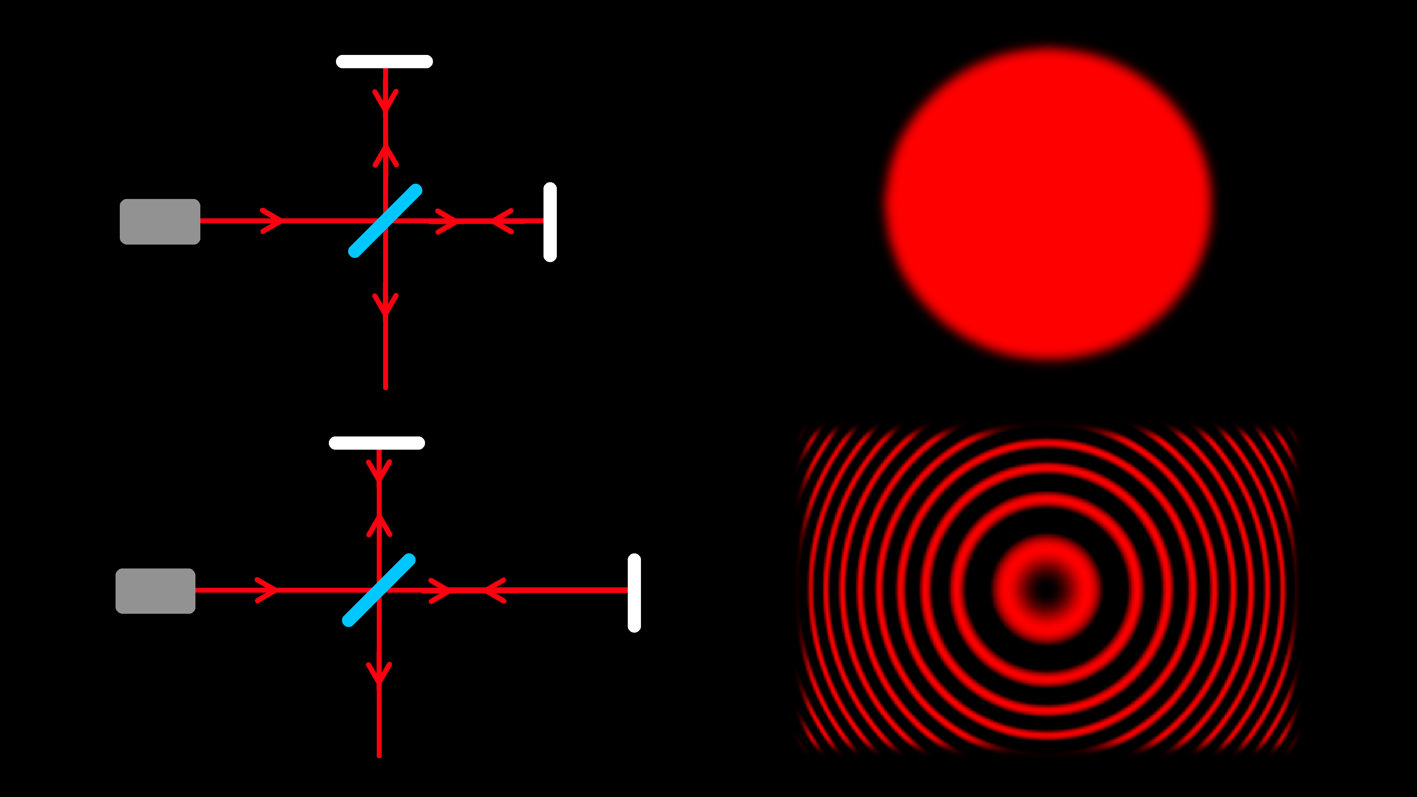
Interference patterns: Top – mirrors aligned perfectly, resulting in a single dot. Bottom – mirrors at slightly different distances, creating a broader pattern while maintaining perfect alignment
Building with LEGO
Our journey began with LEGO bricks. Their modularity allowed us to create a stable framework for the interferometer. The first version included a laser pointer as the light source, small mirrors, and a beam splitter – a key component for dividing and recombining light beams to produce interference patterns.
The LEGO model revealed some serious limitations. Precise alignment of the mirrors was nearly impossible. Adjustments involved a lot of patience and a steady hand, and the tall structure was prone to vibrations that distorted the results. As a proof of concept it was a success, but we knew we needed a more robust design.
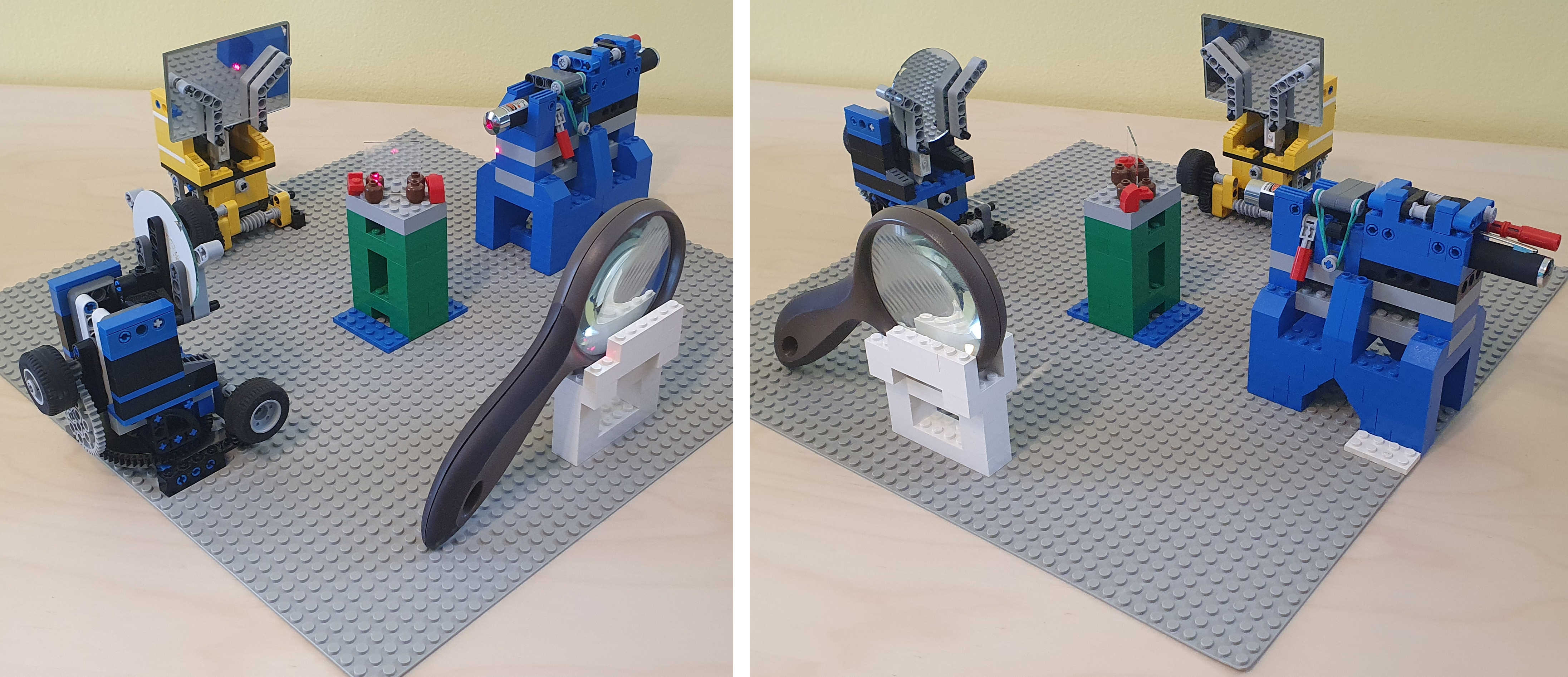
The LEGO version of the interferometer
Upgrading to 3D-Printing
Determined to improve, we transitioned to 3D printing for the second version. This allowed us to design custom mounts with fine-tuning mechanisms for the mirrors, inspired by professional optical setups. Adjustable screws provided precise control over the mirror angles, ensuring the light beams aligned perfectly.
We also incorporated more robust components, such as first-surface mirrors or an actual laser diode, which reduced unwanted reflections and significantly improved the quality of the interference patterns. The result? A functional interferometer capable of producing stable, recognizable interference fringes – lines that form where light waves interact constructively and destructively.
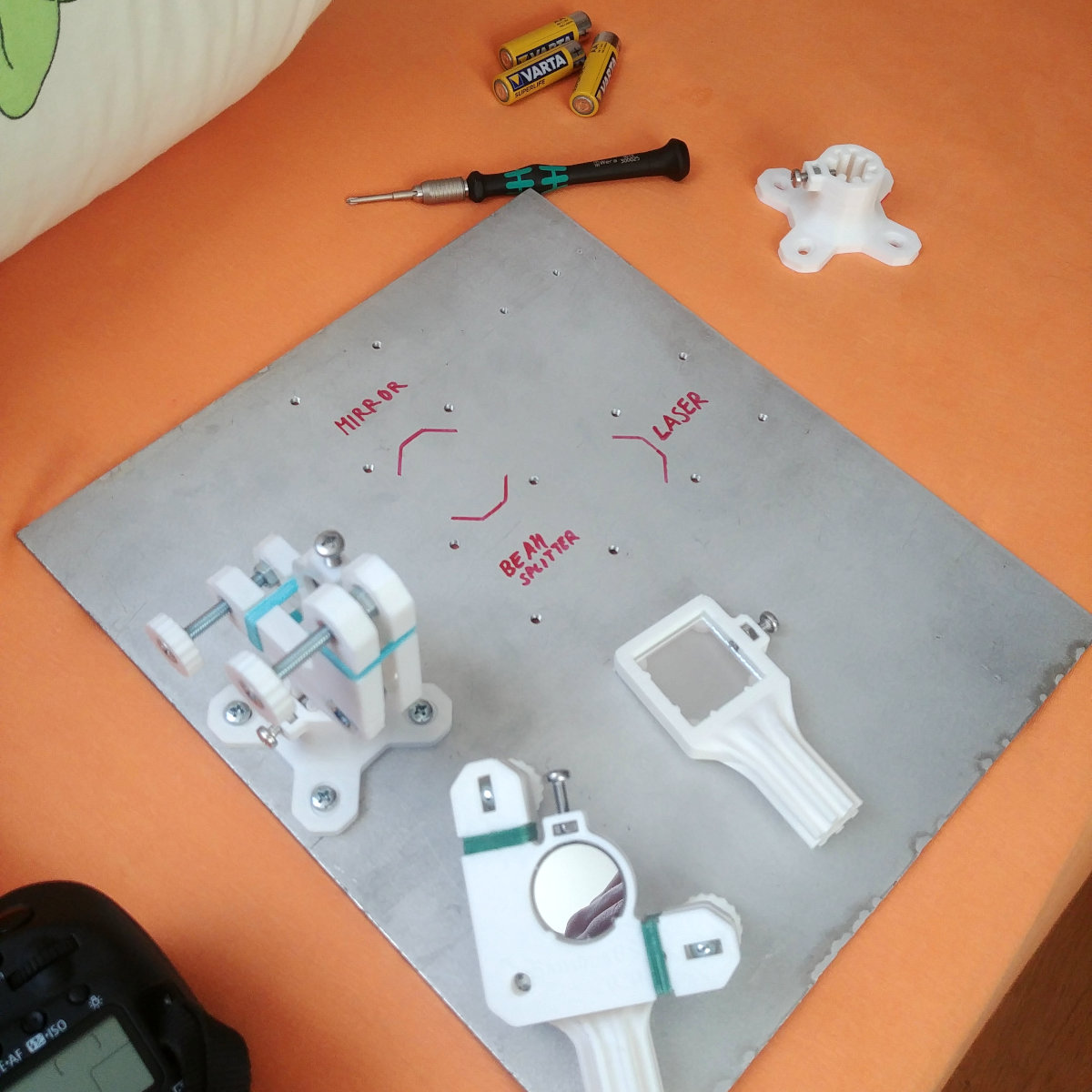
The LEGO version of the interferometer
Visible interference pattern, flickering due to vibrations
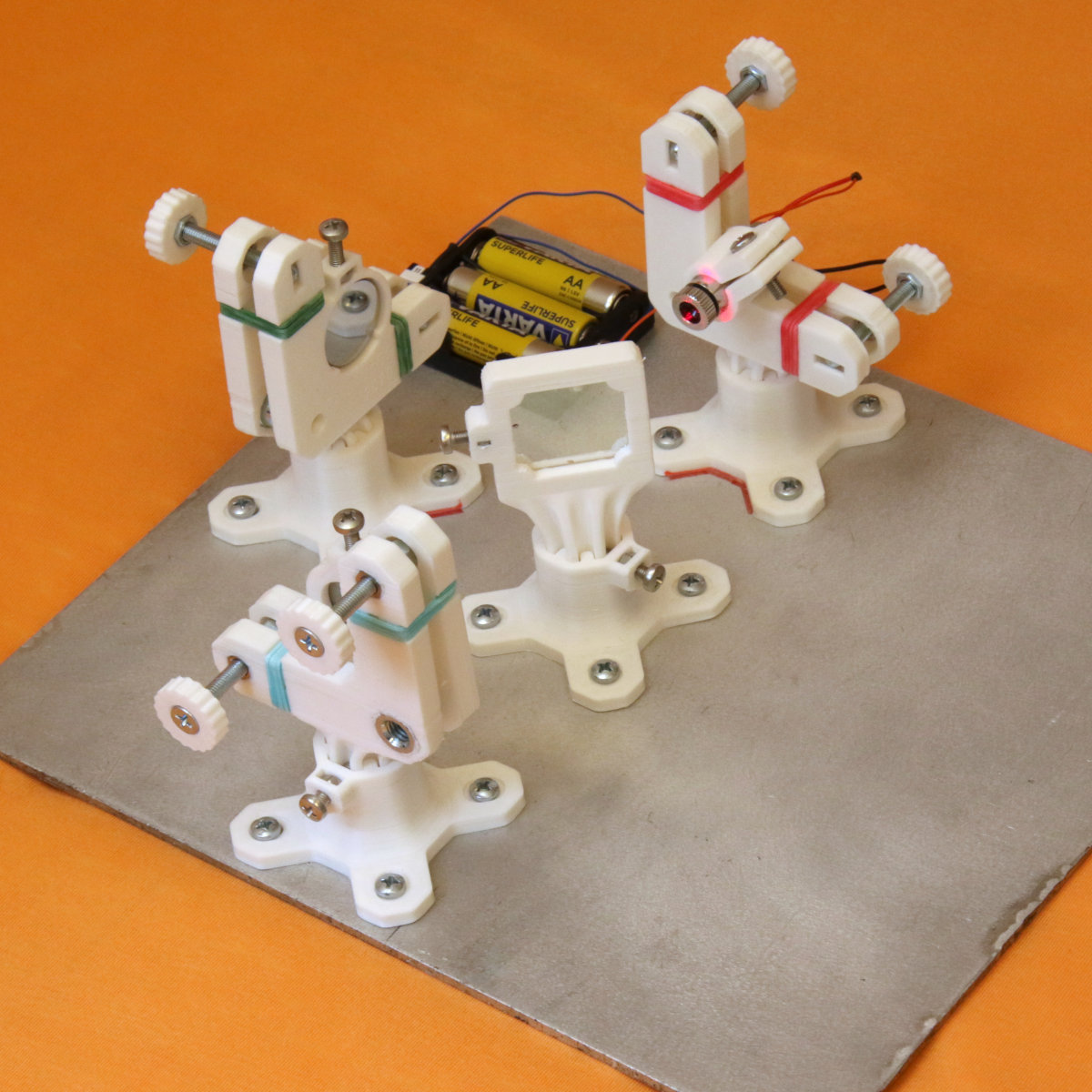
Final interferometer build
Sharing the Results
Once the interferometer was complete, we had the awesome opportunity to demonstrate it at the Physics Teachers’ Inventions Fair in Prague. Presenting to an audience of over 160 educators was intimidating but rewarding. Teachers were intrigued both by the two young presenters and the project’s blend of engineering creativity and low cost.
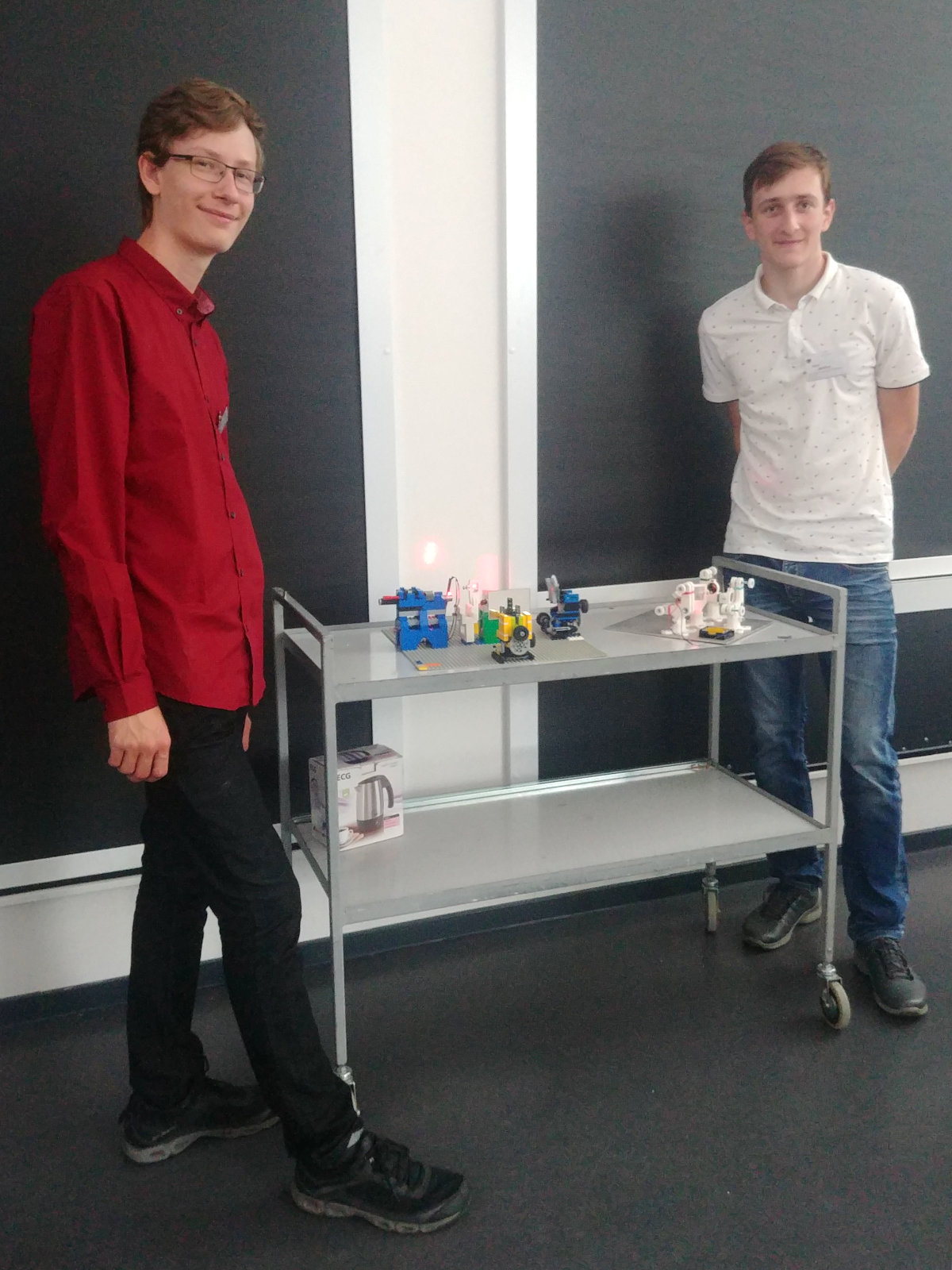
Me and my friend right after the conference presentation
Our work did not stop there. We documented the project in an article for the conference proceedings, and it was later published in the Československý Časopis pro Fyziku physics journal. Seeing our names in a scientific journal was surreal – it filled us with pride and gave our project a lasting legacy.
Published article, in Czech
After the project, we donated the 3D-printed interferometer to our school, where it became a teaching tool for future students. It is still occasionally used in physics seminars to demonstrate light interference.
Looking back, this project taught me more than just physics. It showed me the value of iterative design, the power of accessible tools like LEGO and 3D printers, and the impact of sharing your work with others. From its humble LEGO beginnings to a professional-quality 3D-printed model, the interferometer stands as a testament to creativity, persistence, and resourcefulness.
